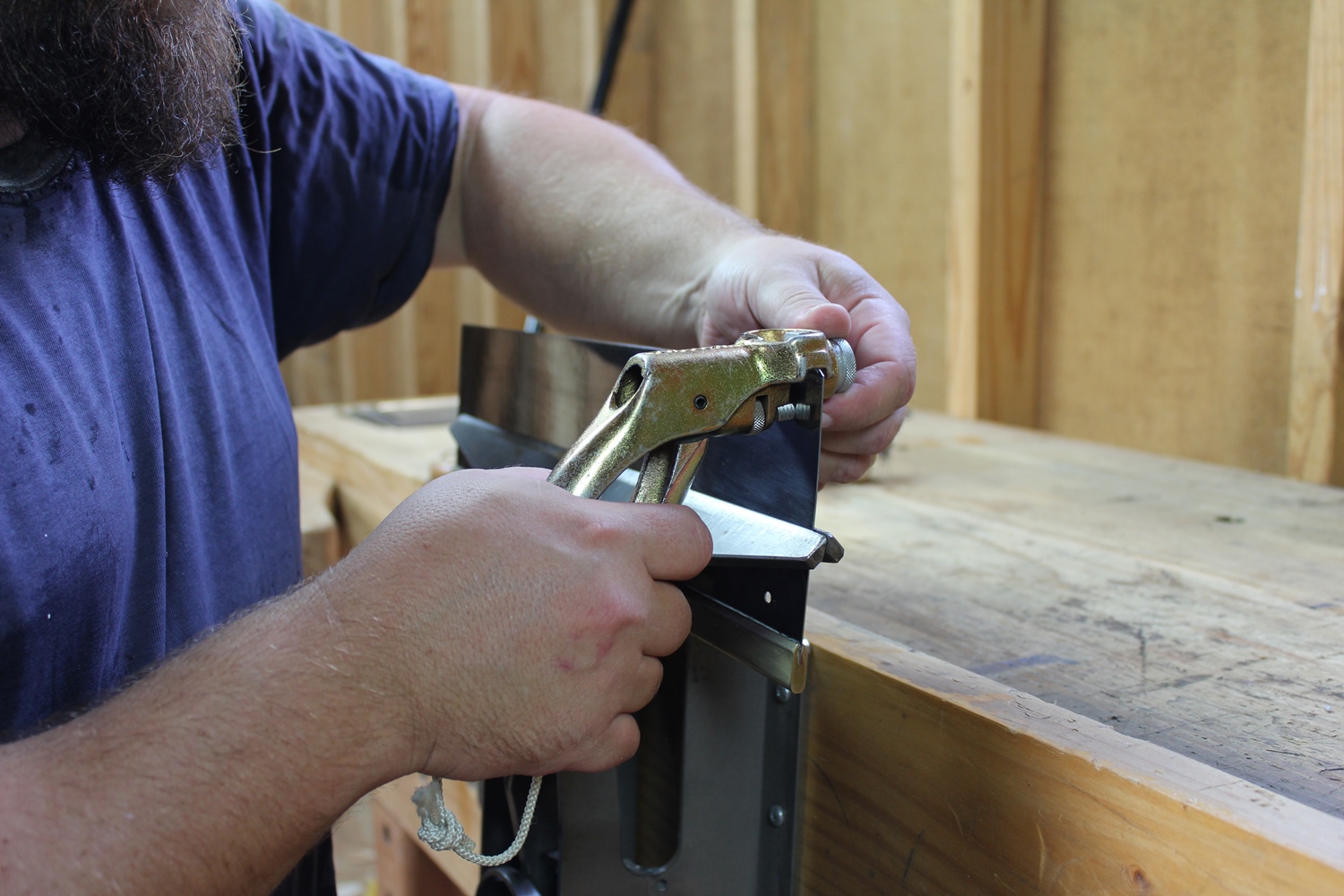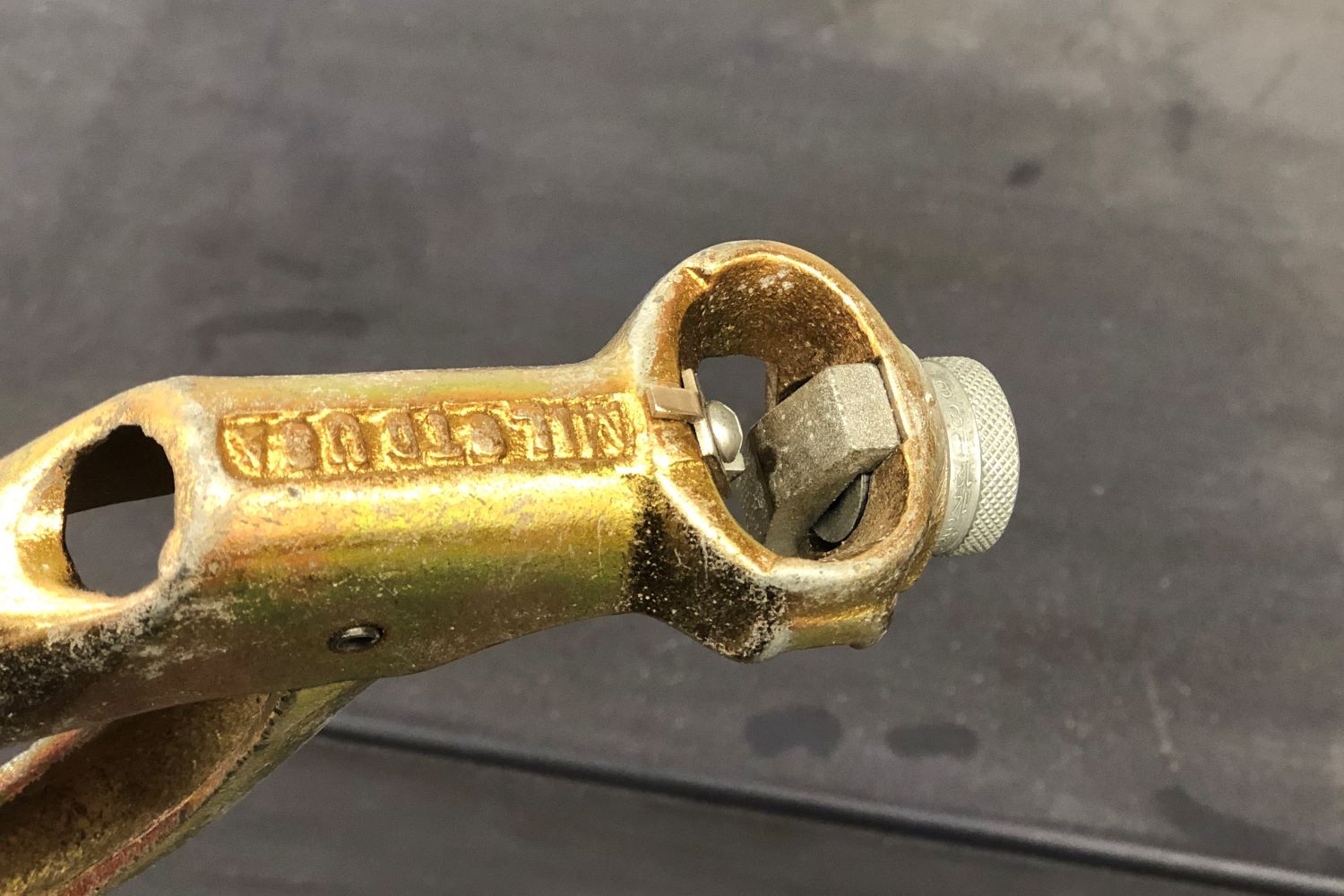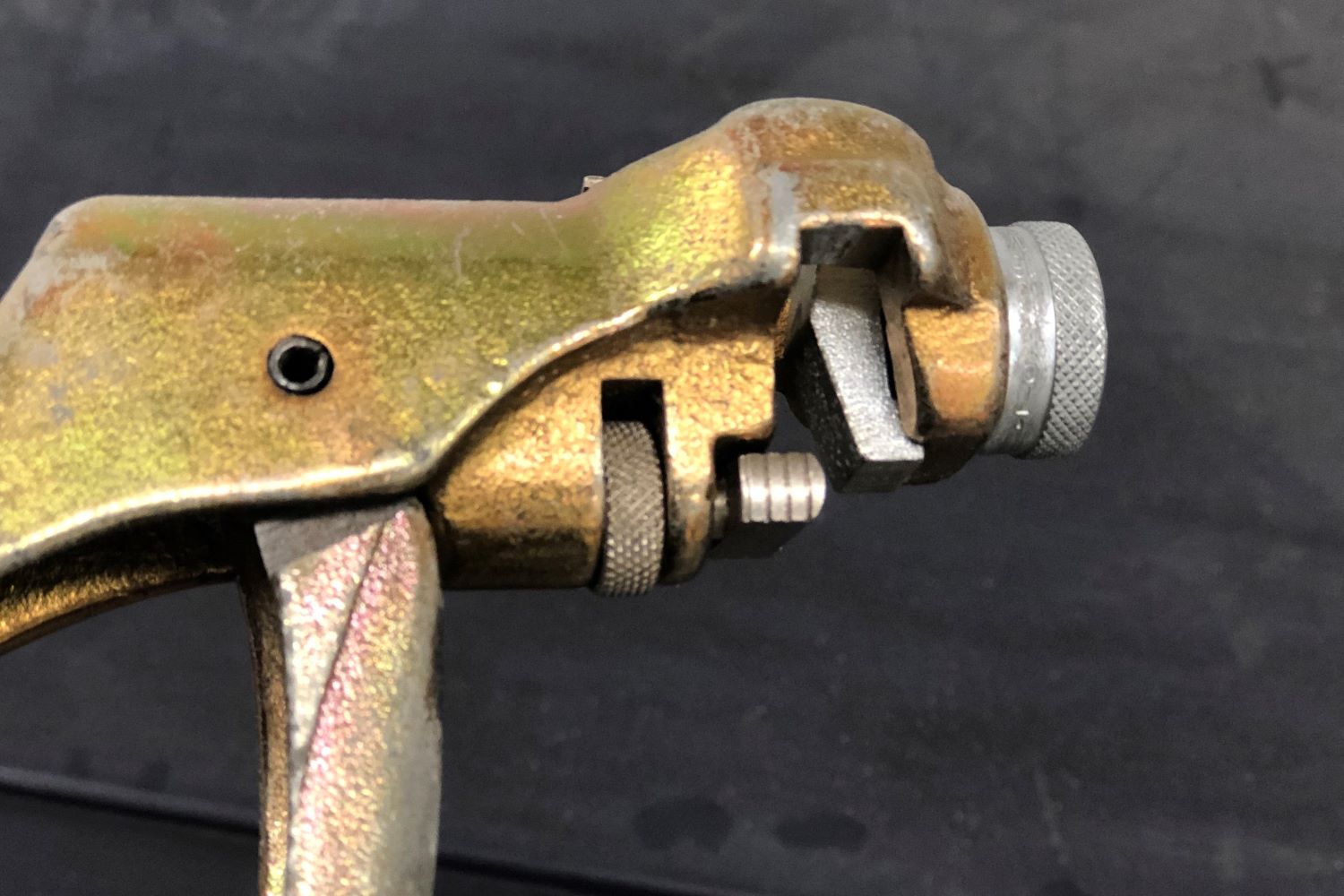How To Set The Teeth On A Hand Saw
The question of how much fix to add to a paw saw is a common one for new saw sharpeners. Tooth gear up is a disquisitional component to the performance of a hand saw. Just how do you know if your saw has the proper corporeality of set?

Enough of ink has been spilled near hand saw sharpening in the concluding decade. At that place are tons of guides on selecting the proper sized tapered saw sharpening files, what rake and fleam angles that different saws should have, how to articulation the toothline so that information technology'south overnice and directly, or properly breasted, and how to file the teeth to joint. But when information technology comes to adding set to the teeth, there isn't a lot of guidance. Near saw sharpening educational activity volition just tell you to prepare your plier type saw set to the number of points per inch of your specific saw and clasp it over each molar.
Unfortunately this isn't really the entire story. At that place'southward actually quite a lot more involved in calculation the proper amount of set to a saw than merely the PPI of the blade. What about the blazon of saw? Is it a crosscut saw or a rip saw? Is information technology a long paw saw for breaking downwards stock, or a short joinery saw? What type of wood will the saw primarily be used in? Will information technology be hardwoods or softwoods? Is the woods greenish or kiln dried? All of these factors play a role in choosing the proper amount of set.
Before we start to try and sympathize how to set our saws properly though, let's have a infinitesimal to talk near the tools of the trade. At that place are multiple ways of setting the teeth on a manus saw, ranging from uncomplicated and hard to primary, to complex and almost foolproof. I've tried them all – hammer setting, saw wrests, and plier type sets, both new and old. In my opinion, the best tooth setting tool for the DIY hand saw sharpener is the plier type molar prepare. These tools provide the most consistent amount of tooth set with the least amount of practice. However, the plier type tooth set up does not automatically apply the correct amount of set to the teeth. You still need to adjust the settings on the tool to be appropriate for the specific saw.

Not all plier type saw sets are created equal, either. I've used quite a number of them and some are definitely more intuitive than others. In addition, some sets have simply a unmarried adjustment – the number of points per inch. These tools assume that every saw with a certain number of points per inch should accept the same amount of curve put into the teeth, regardless of the other factors that I mentioned above. The improve quality tools, however, will have two adjustments – i for the number of points per inch and 1 for the amount of bend that the tool applies. These types of sets are the ones that I recommend you seek out. They are past far the improve tools.
The first adjustment, the number of points per inch, typically adjusts the position of the anvil up or downward along the blade so that the tooth is bent at approximately the center of its height, or merely a footling less. Bending the molar more than one-half way down runs the adventure of breaking the tooth, and then this is an important adjustment. Some saw sets will simply piece of work with a express range of molar sizes, and then the manufacturer might make a couple of different models (eastward.m. a large and a small) for different size ranges of teeth. Others, similar mine (a clone of the Stanley 42W), will work for a much wider range of tooth sizes. This has to do with the size of the "hammer" that bends the teeth, and the aligning range of the anvil. If you try to apply a gear up meant for large teeth on a smaller saw, the hammer will be also large for the small teeth and the anvil won't be able to put the curve in the correct spot on the molar. If you try to use a set meant for small teeth on a big saw, the anvil may non be able to be adjusted far enough down the height of the teeth and you lot may not be able to put sufficient set into the teeth as a consequence.

While the first adjustment sets the position of the bend on the tooth, if your set has a 2d adjustment, like mine does, information technology is used to adjust the amount of bend put into the teeth. This aligning, in my stance, is the more than critical one, and the one that the lower quality saw sets tend to lack. On my model, turning the knurled wheel on the lesser of the jaws moves the domed plunger in and out. This changes the bending of the bract in relation to the anvil and therefore changes the angle of the resulting bend that is put into the teeth. Moving the plunger out results in more set while moving the plunger in applies less set.
Having both of these adjustments allows me to tailor the set of a saw to a specific state of affairs if demand exist. For instance, a crosscut saw typically needs less prepare than a rip saw (because the kerf in a rip cut can tend to shut and pinch the bract during the cut, while crosscut kerfs typically do not do this). So I can use this adjustment to put a chip more than set in a 10 PPI rip saw than I would in a 10 PPI crosscut saw. Similarly, saws used primarily for softwoods benefit from a little more set than saws used primarily for hardwoods. The second adjustment of my set allows me to easily achieve this.
In terms of evaluating whether or not your hand saw has the proper set, at that place have been a lot of methods over the years that accept attempted to quantify this. Y'all can measure the thickness of your saw blade and and then mensurate the corporeality of gear up in the teeth using a micrometer. However, this level of item is actually not necessary, and, furthermore, actually quite unreliable. Equally mentioned above, at that place are simply besides many factors that play into how much set a saw should have. So just maxim that a dovetail saw should accept 3 thousandths of an inch of fix on each side of the bract really doesn't encompass all of those situations (I just made this number upward so don't become quoting me on information technology).
The virtually reliable method for evaluating set is simply testing the saw and seeing how information technology feels in the cut. A properly gear up saw should cutting through the board hands with no binding, simply with no more space in the kerf than is necessary to forbid the saw from binding. If the kerf is loose, the cutting will have a trend to migrate inconsistently.
When I sharpen a saw, I add the to the lowest degree corporeality of set up that I recall I can get away with for a detail saw. And so I exam the saw in the woods most likely to be used. If the saw binds at all in the test cuts, I add together a impact more set. This process should continue until the saw feels just correct in the cut.
If the saw is really sloppy in the examination cuts, or it drifts inconsistently left and correct, it probably has besides much set. Unfortunately, there isn't a real reliable way to "united nations-set" a saw that has had too much ready put into the teeth. Clamping the teeth in a metallic jawed vise can piece of work to unbend them slightly, however, use caution doing this as bending teeth confronting the management they are set risks breaking the points off. I prefer to lightly side joint the teeth (file their sides) to remove some of the set, even so, this method also has it'due south downsides as filing the sides of the teeth will thin the steel at the most fragile area (the point) and as well risk breaking the points in utilise.
Then it's amend to start with less set up than yous remember y'all need and add together more if necessary. And if you're looking for a video that touches on evaluating set in a saw (too piffling, besides much, and just right), you can watch my latest release below, or over on my YouTube channel.
Source: https://brfinewoodworking.com/how-much-set-should-your-hand-saw-have/

0 Response to "How To Set The Teeth On A Hand Saw"
Post a Comment